Five Tips For Repotting Your Plant
- By Urban Jungle
- •
- 12 Sep, 2018
- •
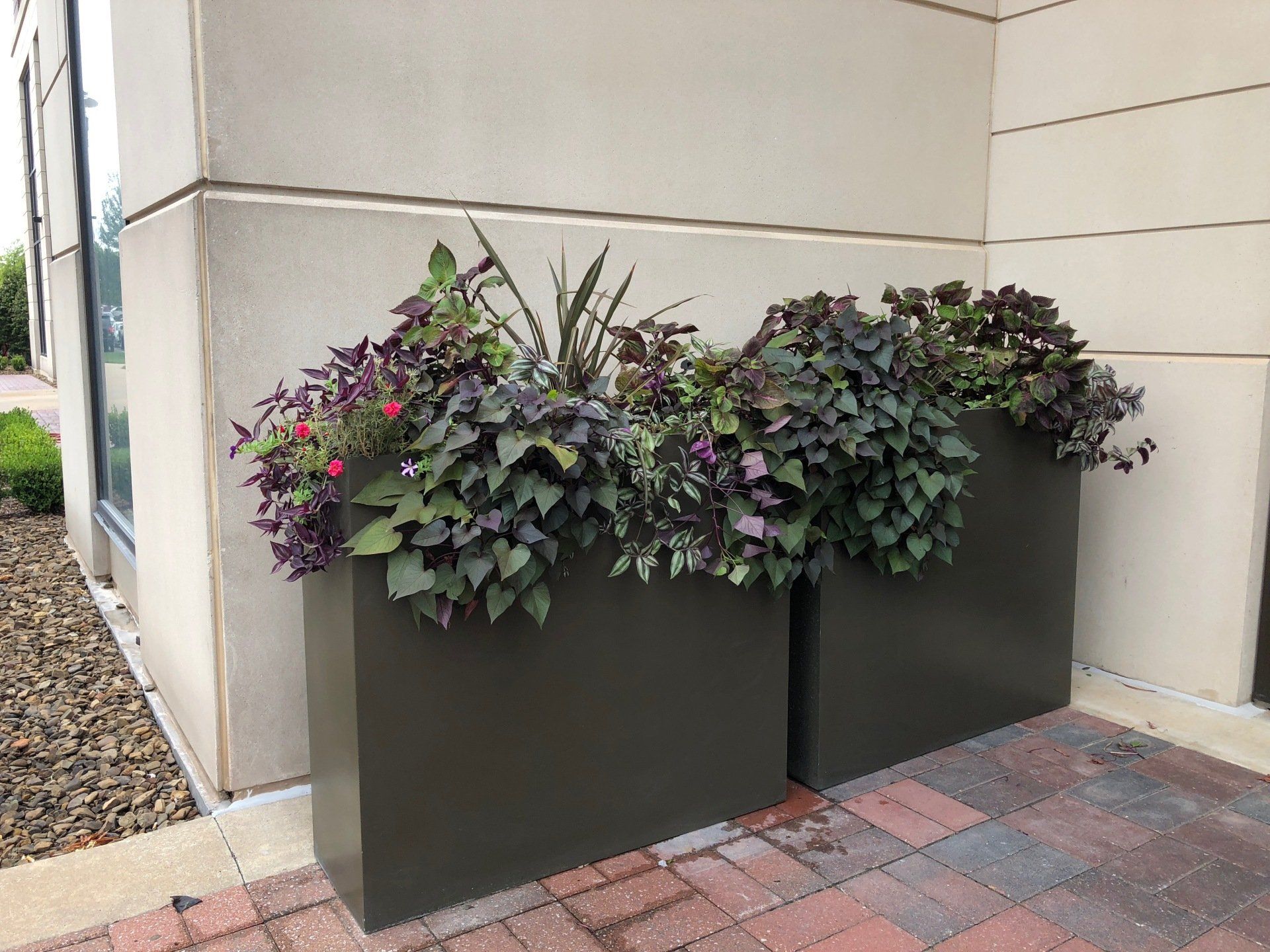
Many of us are wracked by guilt when we see our plants that
we think needs repotting. Sometimes we
put it off because we don’t know how to do it.
Or else it seems too time consuming.
Or we just don’t know if we’ll do it right.
Well, here are some ideas that will help you do what you know you must do:
1. Decide if it really needs repotting. If roots are coming out the hole in the bottom of the pot, and the plant looks bunched up against the top edge of the pot, roll up your sleeves and get to work!
2. Get the right soil. Buy new potting soil appropriate for the plant. Don’t re-use soil in order to insure that pests are not passed on, and nutrients are added.
3. Select the right container. It should be 1-2 inches larger than the one the plant is in. I like ones with saucers that match. A stone in the bottom over the hole keeps soil in but allows excess water to flow out.
4. Spread out the roots carefully. This allows the roots to start branching out in the soil and embracing their new home. Set the root ball on an inch or so of soil, then fill in around the edges.
5. Water thoroughly after filling in with soil. This applies whether it’s a succulent or a pothos. You want the new soil to flow into all the crevices. Adding fertilizer or root stimulator helps the plant to thrive.
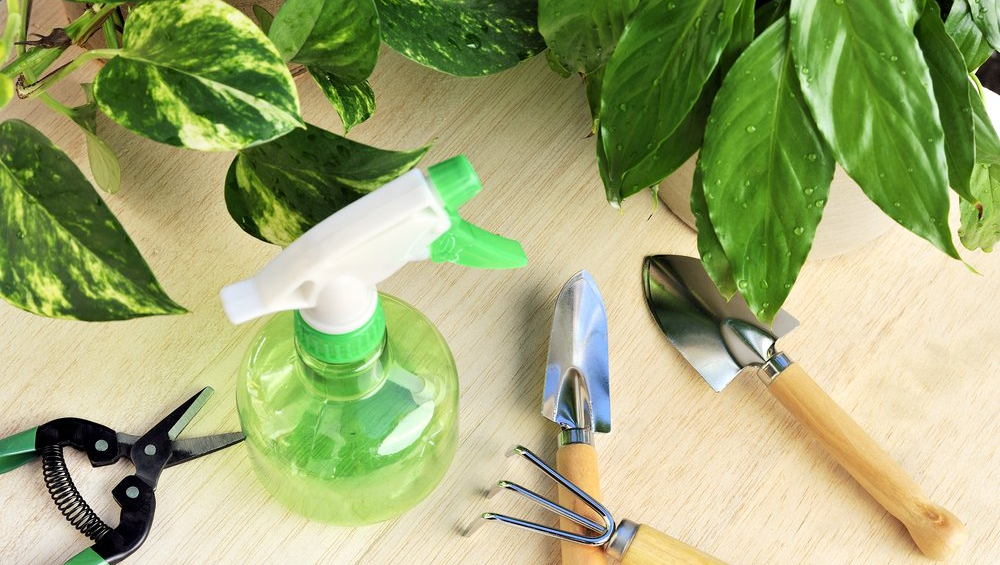
The best example of this is Pothos (which many people call “ivy”.) It is a vine and just because it keeps growing, does not mean you have to let it trail over windows, doors, and everywhere (unless you want your house to look like a greasy spoon restaurant). This just looks messy. If you merely clip it just above a leaf, it will continue growing. You can easily root the clipping in water. And when you have 15 or so, plant them all together for a lovely bushy look.


“Well-lit” means under shade, but a spot that has a lot of light. For example, a covered patio, a wall between 2 large windows, a pergola. A location likes this allows for a wonderful variety of plants that grow downward from their container, creating a solid vertical wall of living greenery. Here are a few plants that will do well:
1. Asparagus ferns are fluffy, tough and fast growing. The lime color and prickly
looking foliage are used to highlight other plants. They would need to be thinned out
from time to time.
2. A number of other ferns can be used beautifully, too, such as lobster claw and
Boston.
3. Wandering Jews have purple and green leaves, and are tender (so they break
easily). They need to be planted tightly together to look their best.
4. Lipstick plants hang downward with masses of orange-red tiny blossoms and are
very easy to grow.
5. Piggybacks have wide leaves and put off masses of “babies”, much as spider
plants do. They’re fun to grow, and look healthy and full.
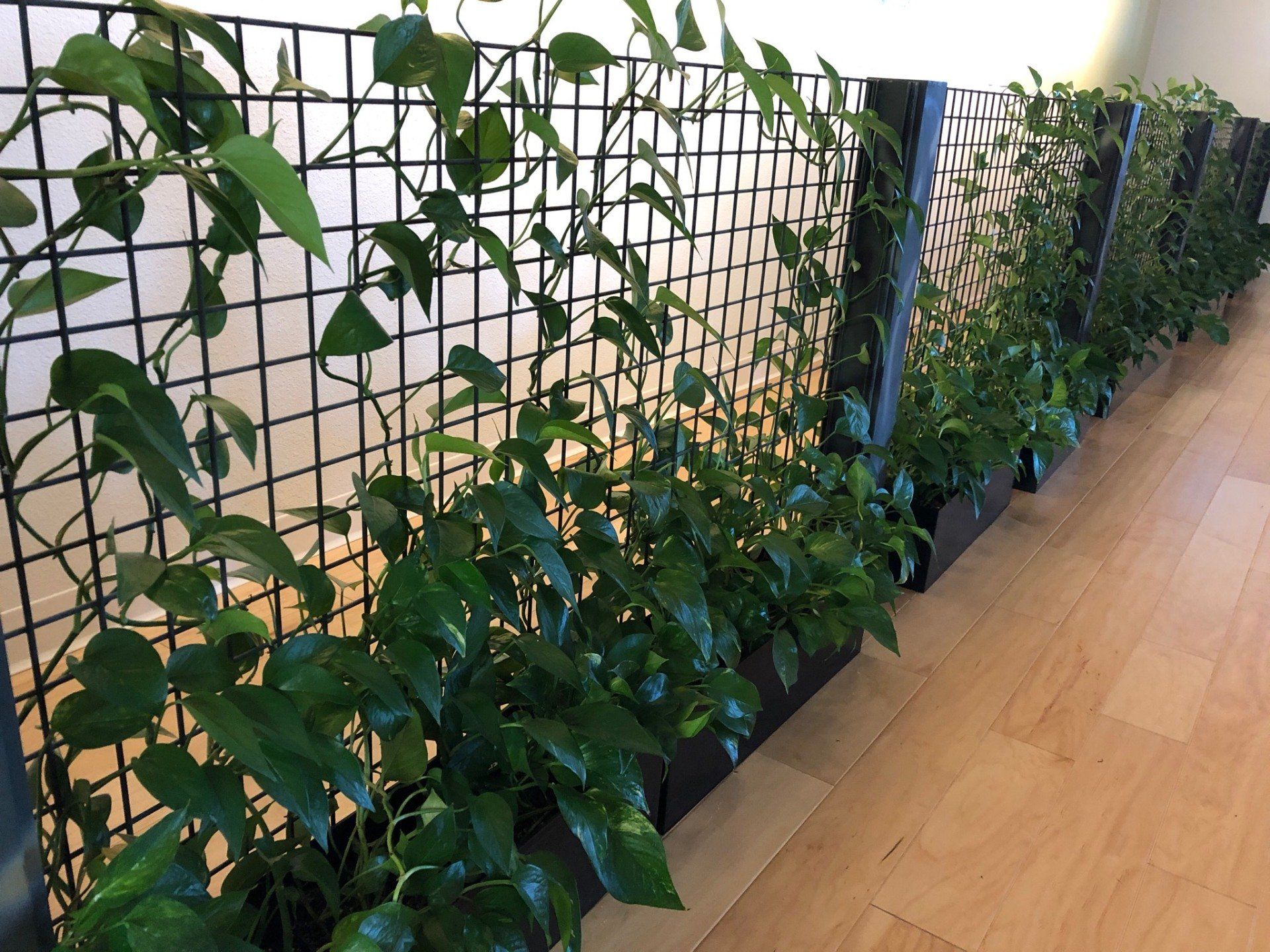
More and more interior designers and architects are planning for vertical walls of living plants. Many companies design systems that can be plumbed in, or added later (and need hand watering). Green walls are inside huge corporate offices (see Twitter’s HQ), shopping malls, and various organizations, while many are on exterior walls of buildings. (Use photos)
If you want a focal point in your office or home, but aren’t a corporate giant, here are some tips for planning and success:
1. Buy or make a frame that hangs on the wall—kind of like a picture frame with a back.
2. Hang the frame where it gets even light, or the plants will grow lop-sided. A good grow light fixture placed right above the frame both highlights the plants and helps them grow properly.
3. Our favorite containers are the WallyGro. They hang singly or in groups, in a frame or on the wall, and are self watering. (You still have to water, but not as often.)
4. Plants should be chosen according the amount and type of available light.
5. Green walls aren’t for everyone, as they require care and attention. But since they are a focal point, it’s important they look good all the time.
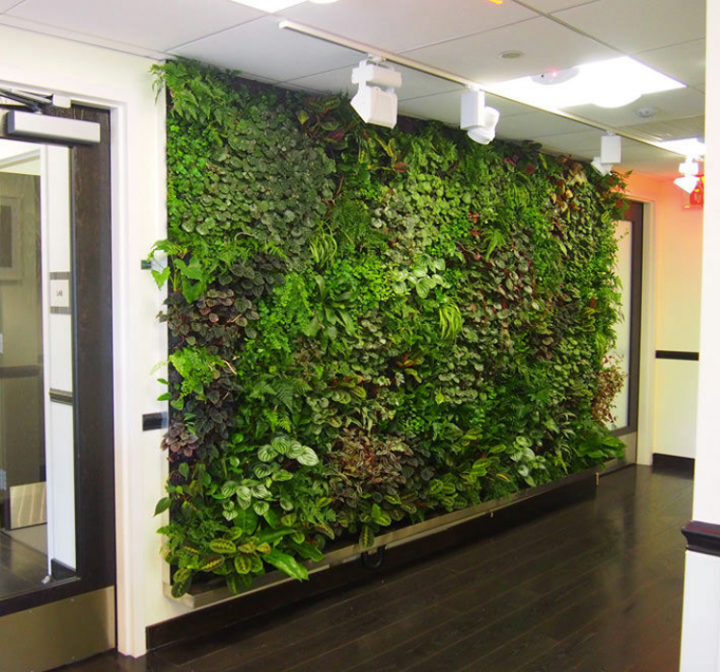
For a vertical garden, we prefer plants that flow lushly from the container, that spread as they grow, and aren’t necessarily upright. Color, texture and leaf shapes can be used for variety. Since living walls can be a challenge to water, choose self-watering containers, or at least pots that contain enough soil to hold moisture for 2 weeks.
The following plants don’t need direct sun, and can grow well with fluorescent light only.
1. Philodendron is easy to propagate, and has charming heart-shaped leaves. It’s happy anywhere but in hot, direct sunlight.
2. Pothos is similar to philodendron, and comes in a variety of green colors: lime green, speckled and varigated. Pothos is simple to propogate and trim.
3. English Ivy is charming, but has a tendancy to get spider-mites. These are easy to control, but must be treated at once.
4. Christmas cactus is a delightful addition to a green wall, and occasionally blooms.
5. Spider plants send off long curving stems with "babies" growing at the ends. They come in variegated crème/lime green and regular green. They grow quickly and root easily.

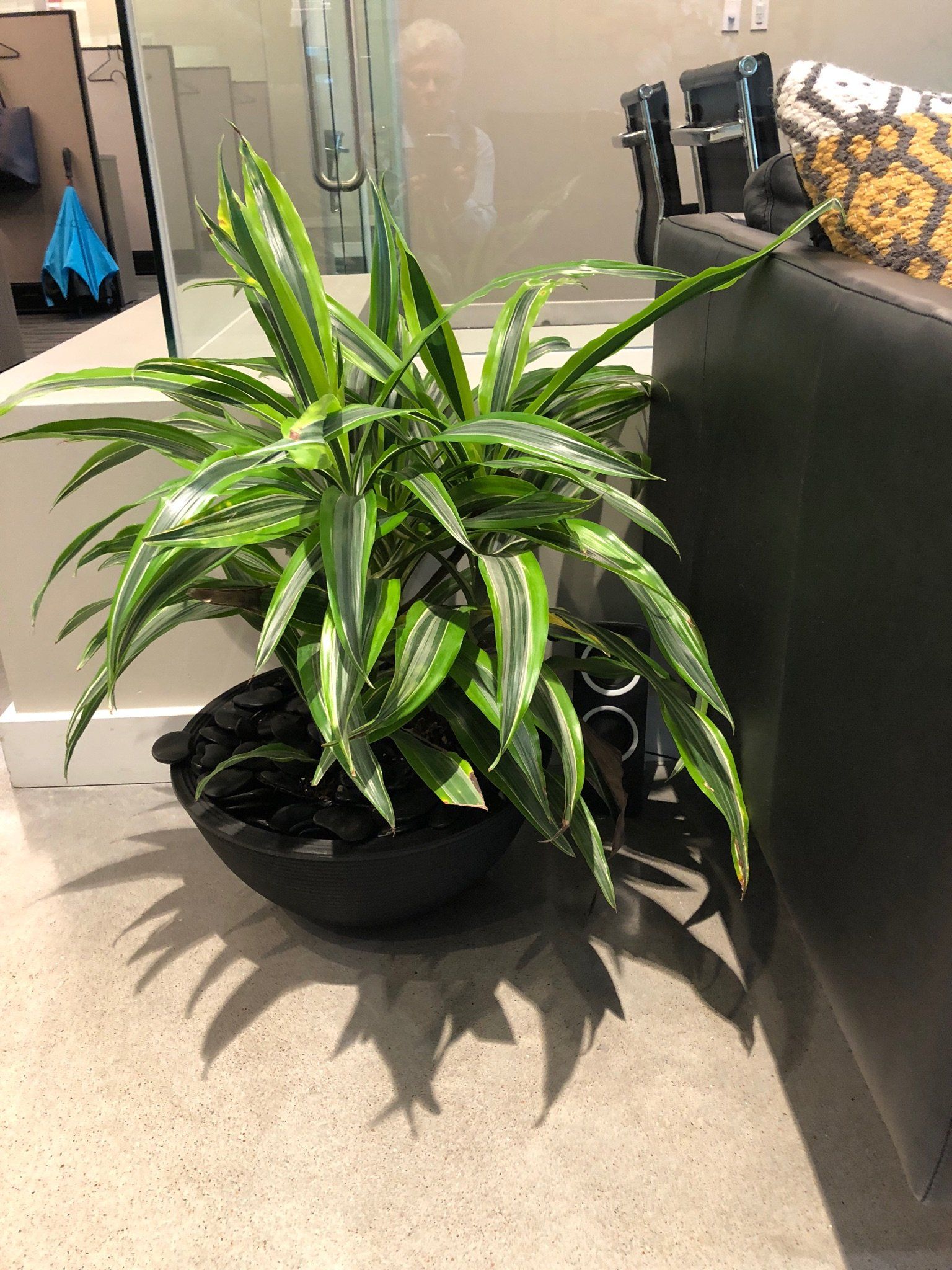
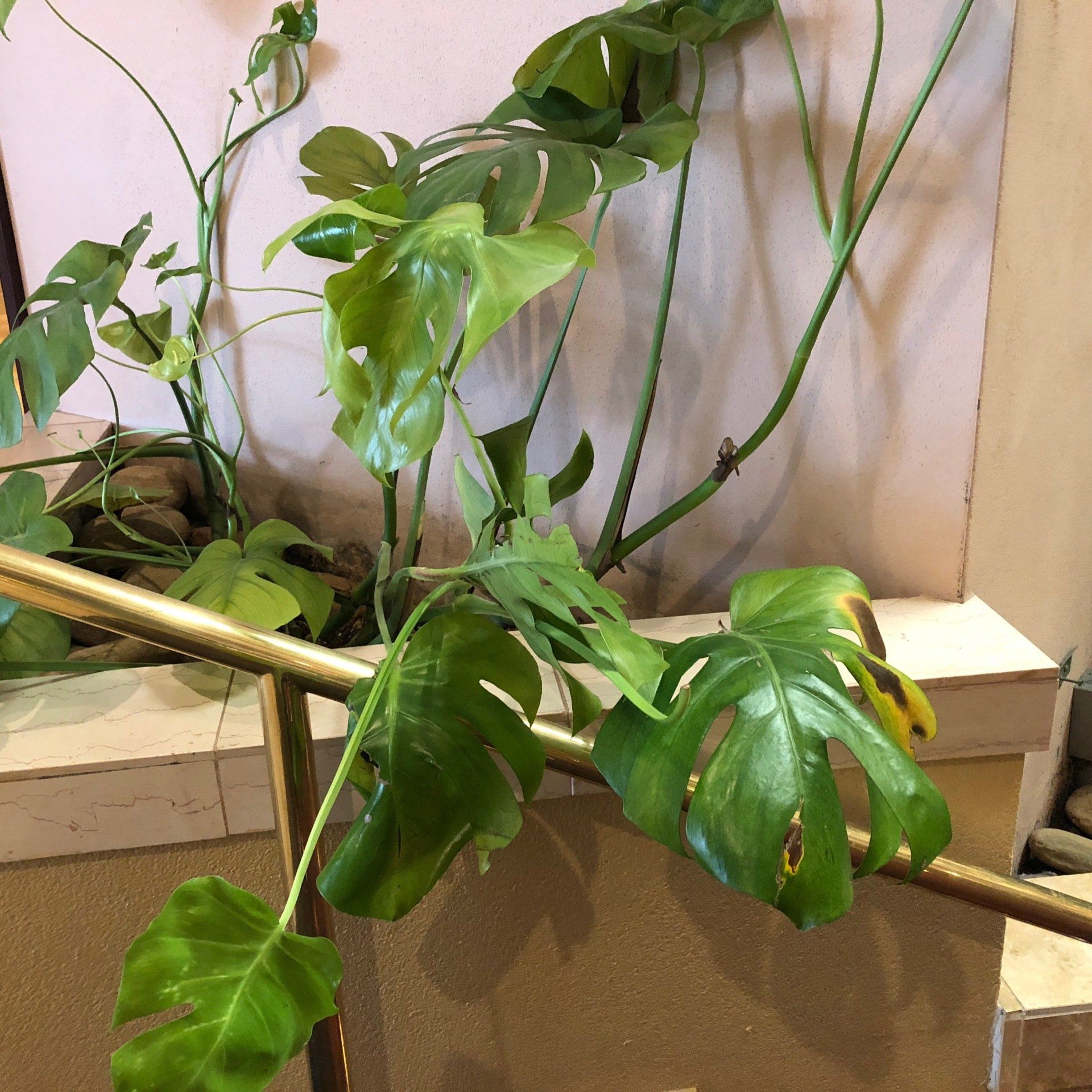
Oh Boy! I can’t count the people who tell me they have a “black thumb”. I’m beginning to think people fear taking care of a plant as much as speaking in public.
On the other hand are those who cannot bear to prune and shape a plant, or who can’t just throw a sick or failing plant out. Those dear saintly souls who are trying valiantly to “save” some bedraggled and yellowing spider plant are deserving of pity and certainly understanding. As we say in the South, “Bless their hearts!”
We go to salons to get our hair cut, and go to CPAs for our taxes. Mechanics help us keep our cars running, and bartenders mix our martinis. So it makes sense to call an interiorscaper to provide and care for our plants.
Professional plant people have resources for nursery-fresh foliage, and wholesalers for good-looking pots and containers of all types. From bamboo palms to ferns, from aglaonemas to air plants, interiorscapers can supply and care for the right plants for the right spot in your business.
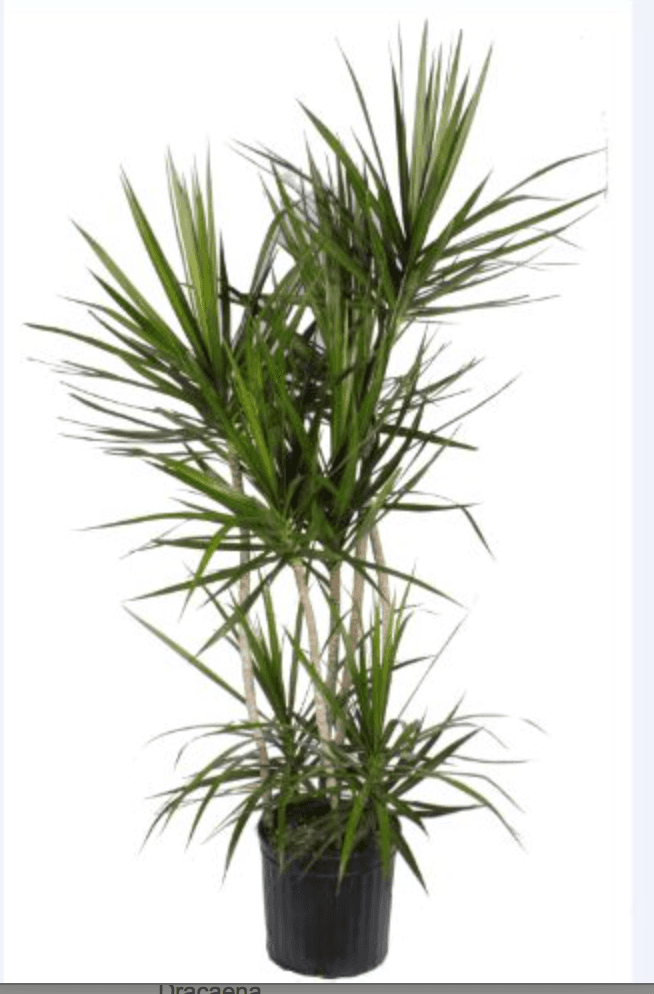
Top Ten Houseplants: Dracaena
When we’re asked for a hardy, tall and stately houseplant that doesn’t take up much space, we often suggest the Dracaena. Many varieties exist, but all have an upright trunk, or “cane”, and thin, strap-shaped leaves. A good-looking plant has 3 or more canes of different heights.
Dracaenas like bright light, but not direct sun, so being in front of a window is fine. Soggy soil will kill them, so let the soil dry out before watering. “Dragon Trees”, as many people call them, benefit from fertilizing in the summer months.
One issue with Dracaenas as a house plant is their owners often don’t keep them trimmed. Shape is important, and thoughtful trimming will enhance the beauty by keeping it from becoming leggy, and also give the owner extra canes to plant. Rooting powder makes propagation very easy, and who doesn’t want more plants?

We love palms! Like Dracaenas, there are many types to choose from. We keep ours inside during winter, and drag them out to the patio in late spring when frost danger is long past. They like to be watered weekly, and fertilized in summer. Sun or shade, they do fine inside or out.
Our favorites for easy care are Kentia, Areca, Bamboo, Fish Tail and Majesty. Julie has a treasured 35-year old Bamboo Palm that was her sister’s. It got very leggy, and is coming back after having been completely cut back.
Palms are prone to spider mite infestations, so keep an eye out for very fine, tiny webs mainly on the frond joints. Work quickly, as a palm can be beyond help in 2 weeks. The remedy is to wash each frond with Dawn and water. There are some good sprays to keep the bugs away at your local nursery.
Read more tips on how to grow palm trees indoors or see what are the best indoor palm trees.
